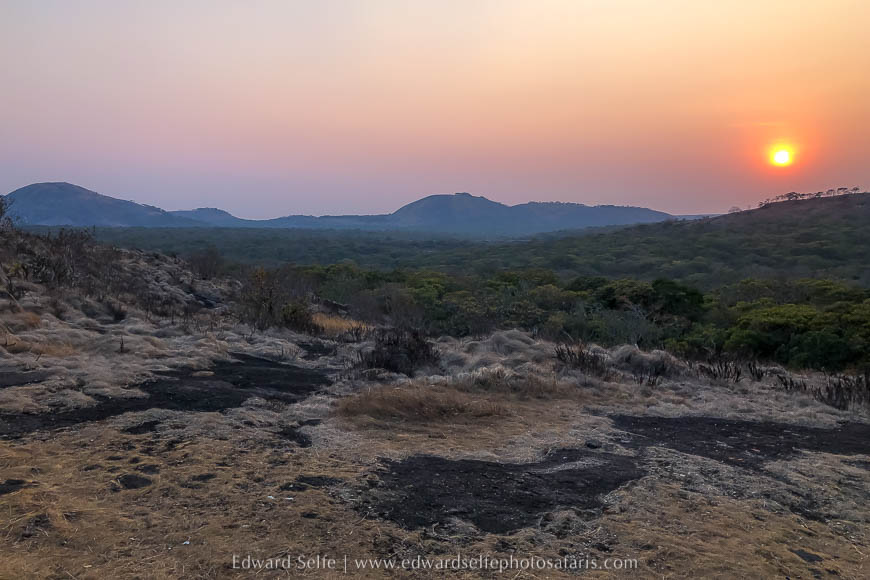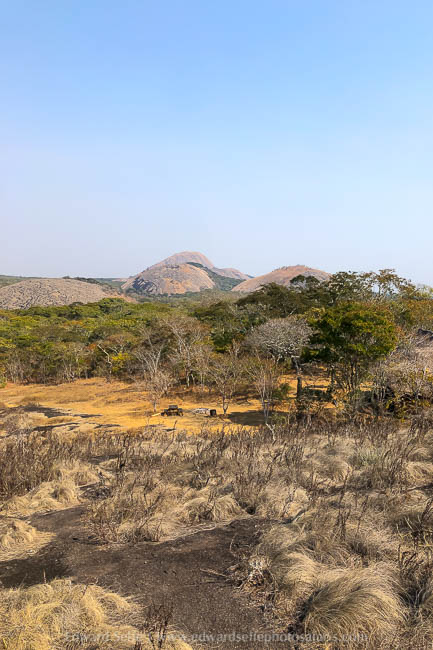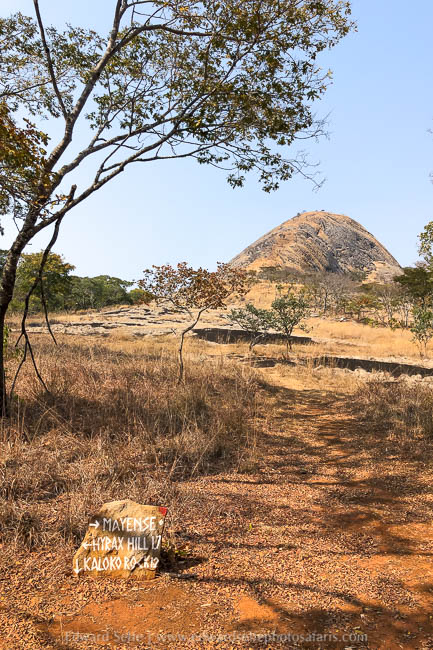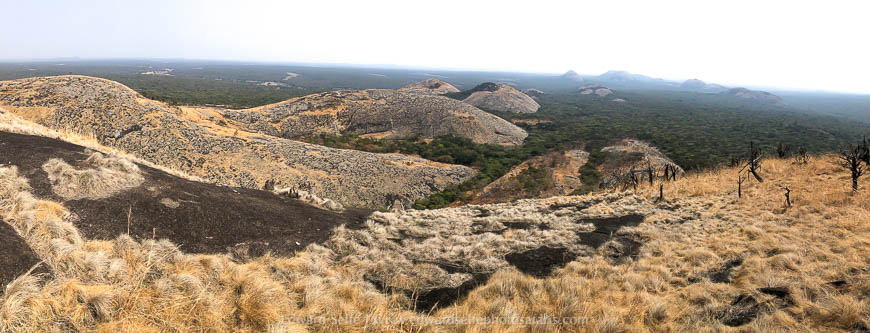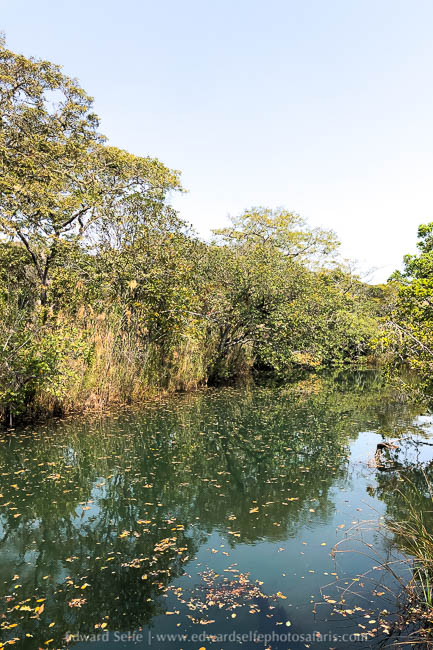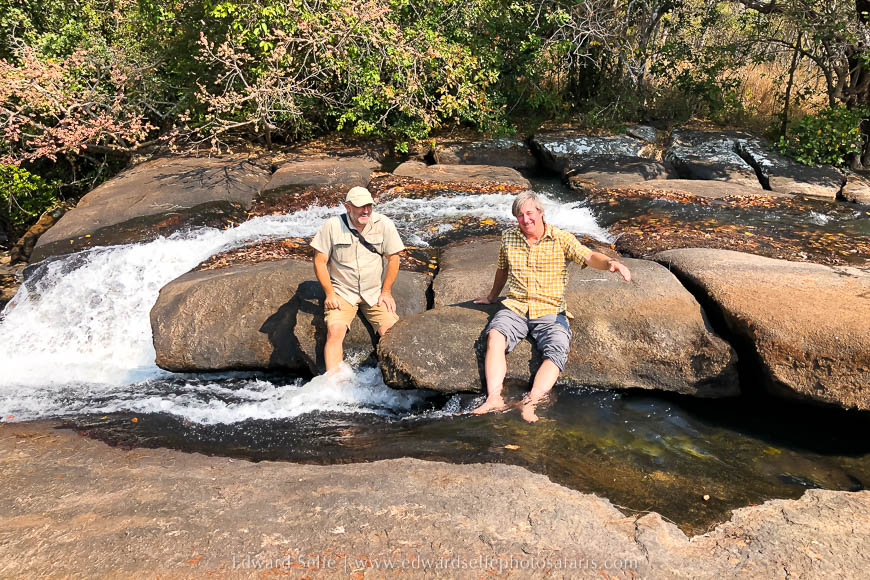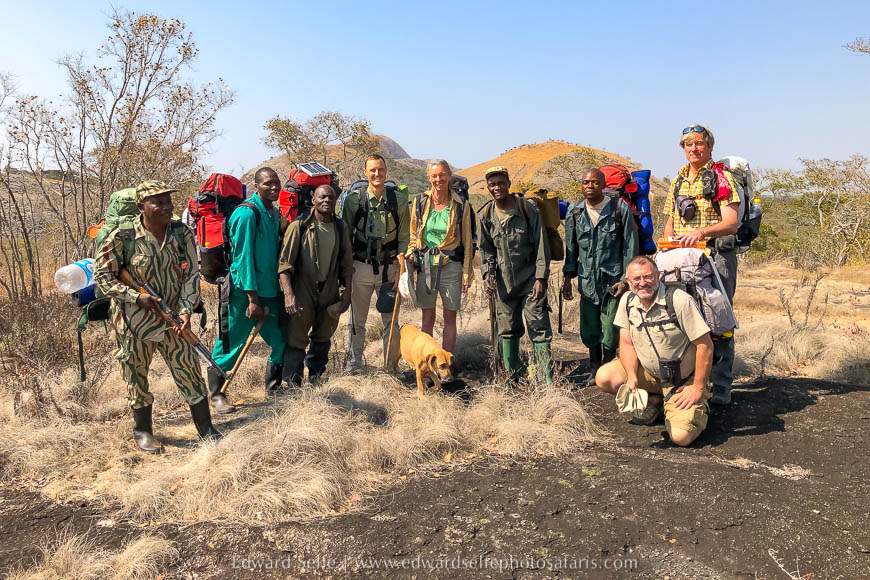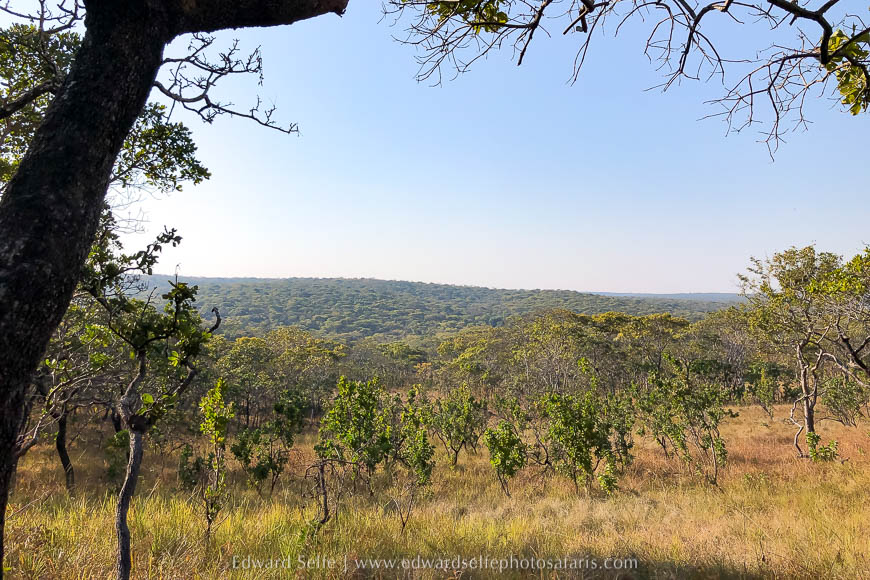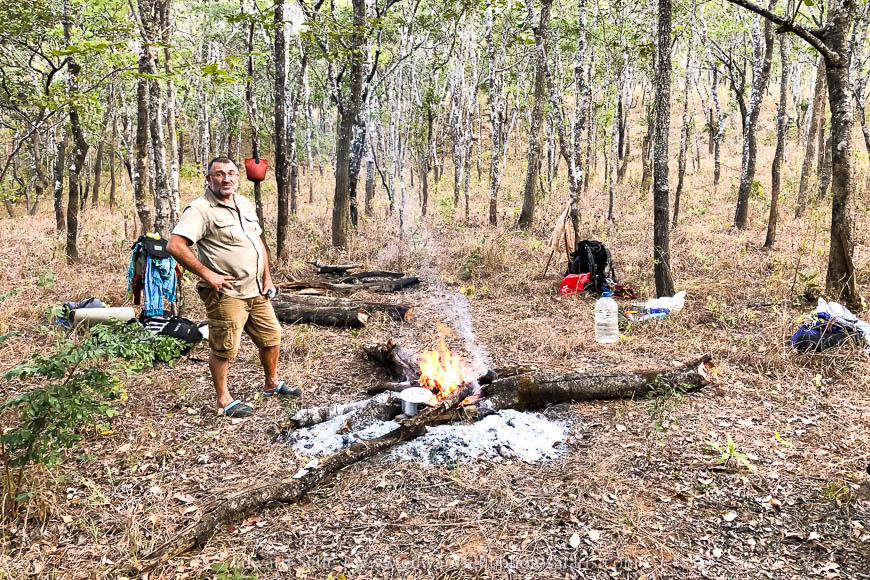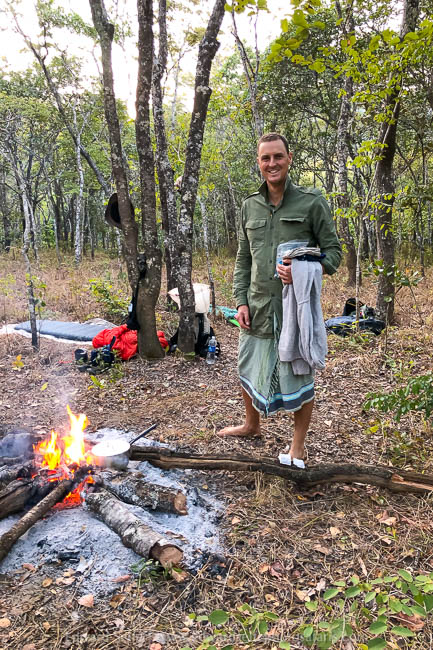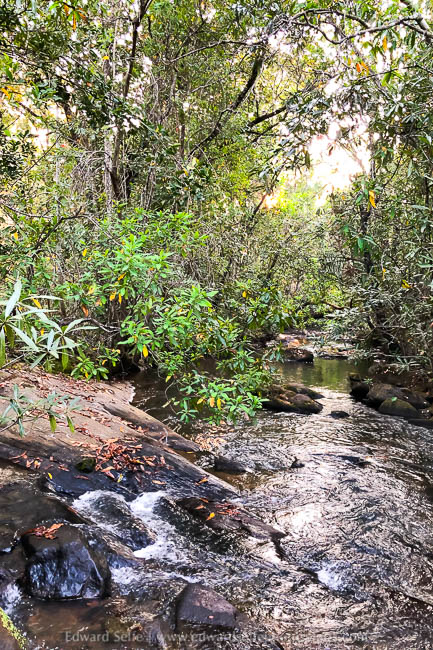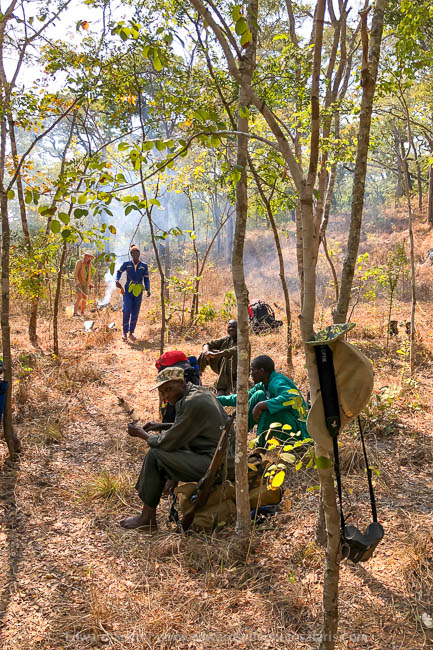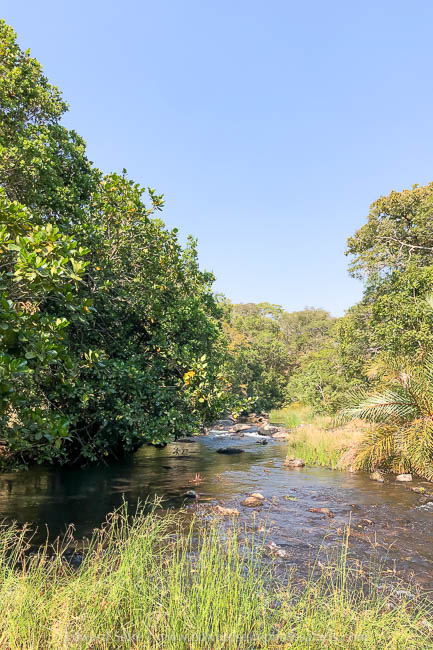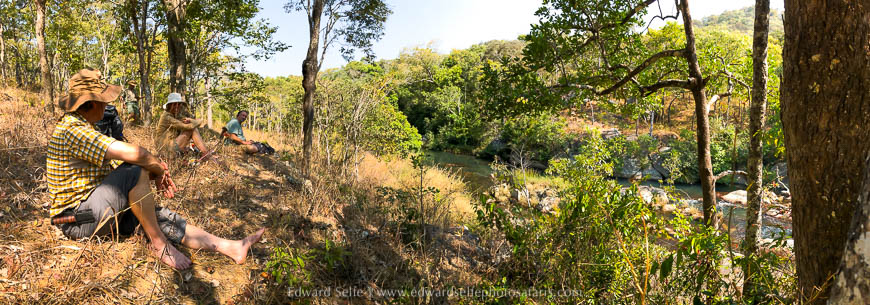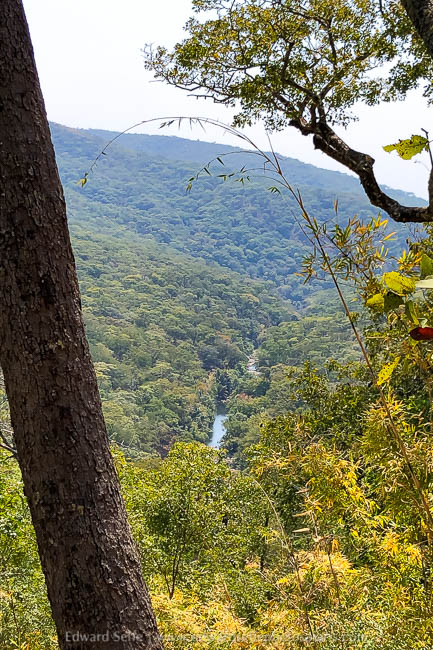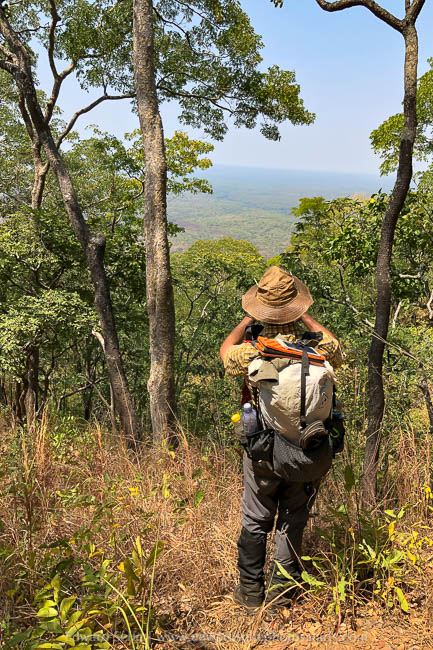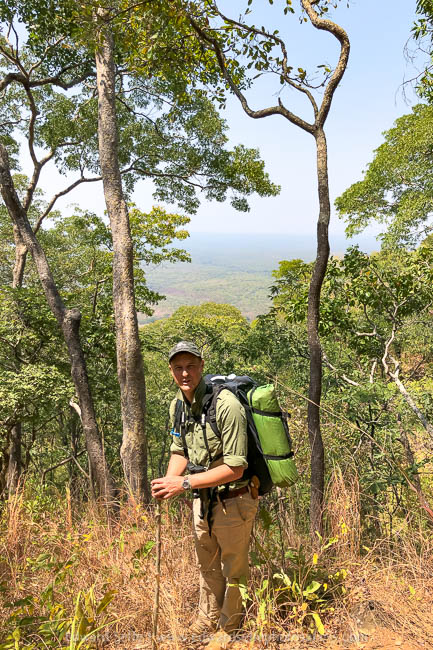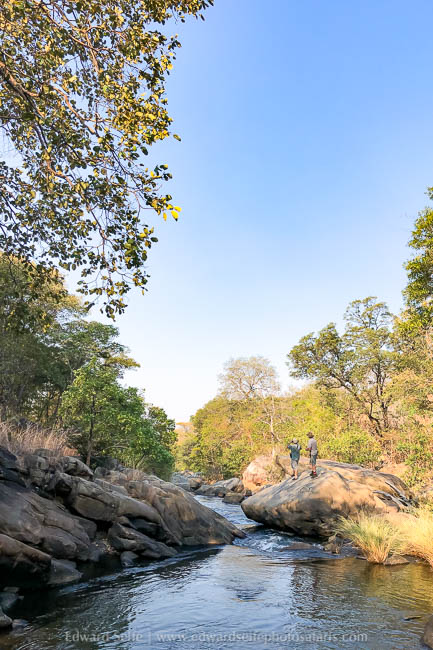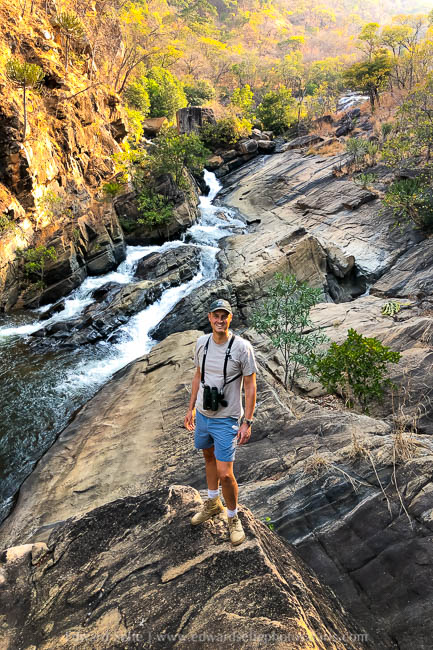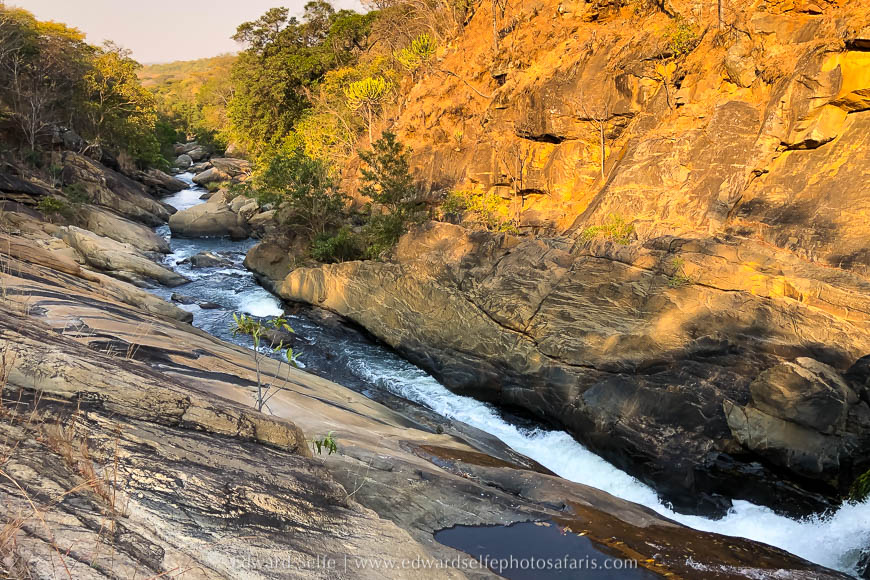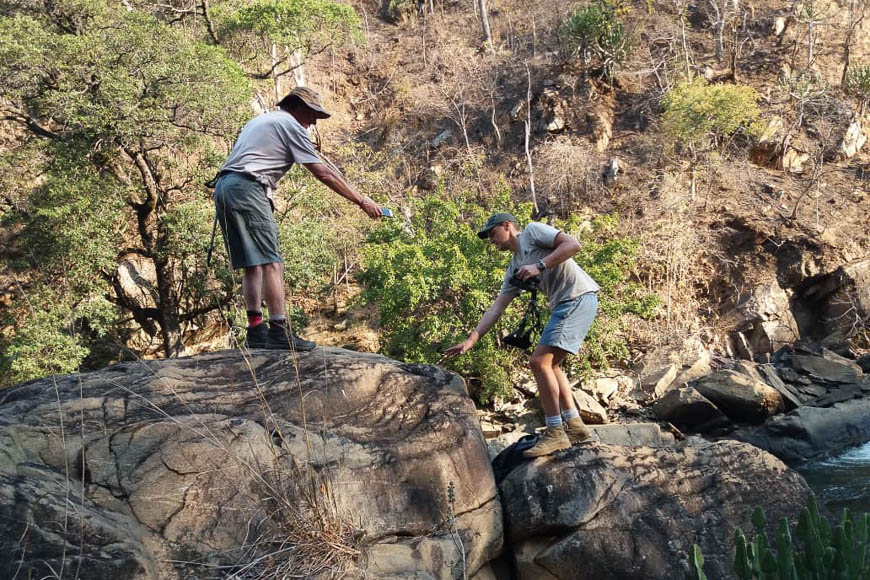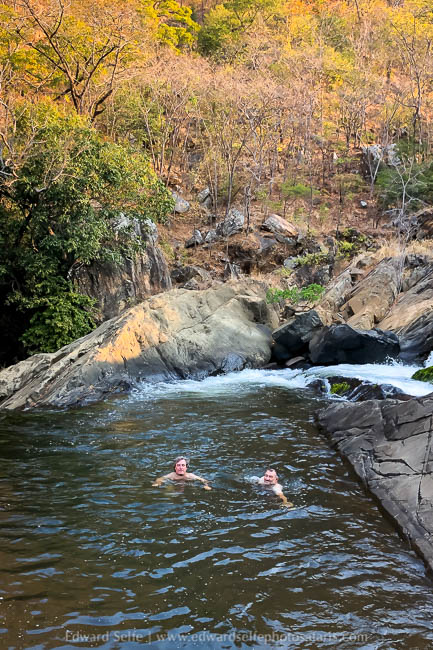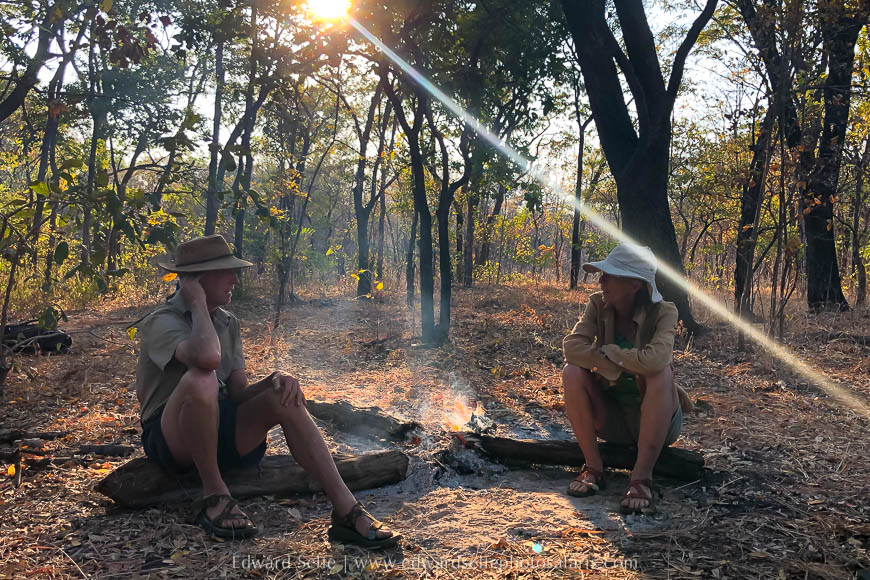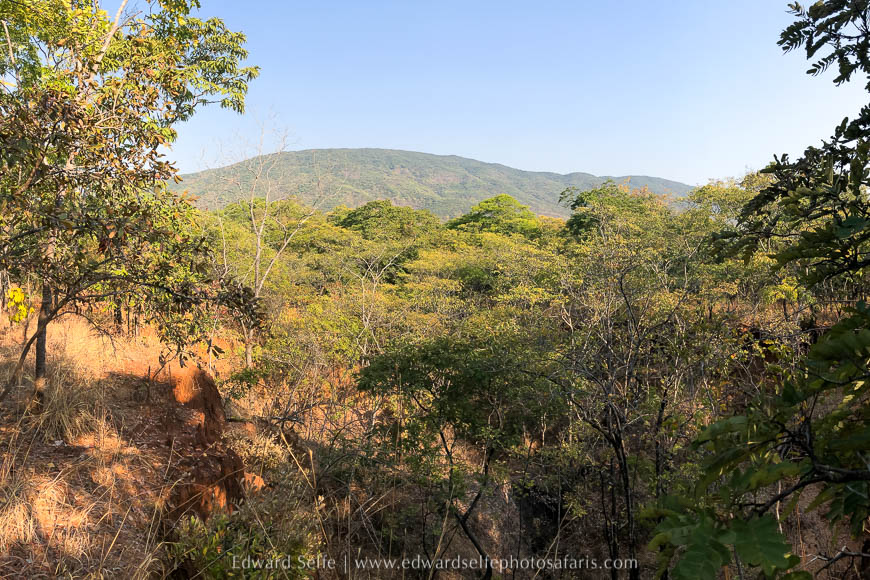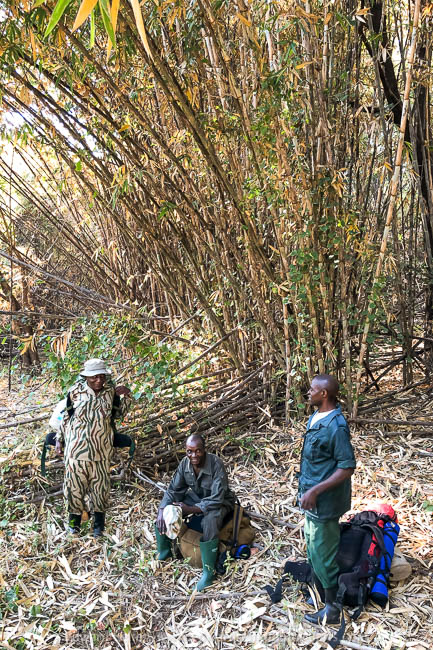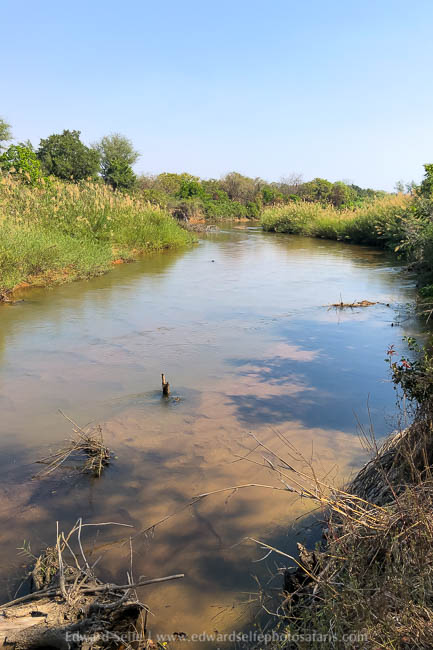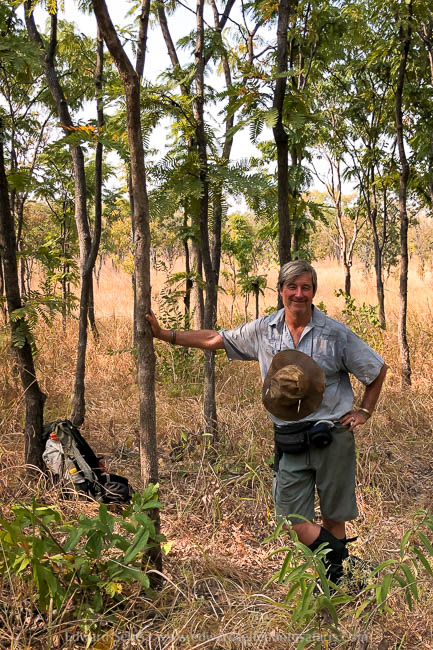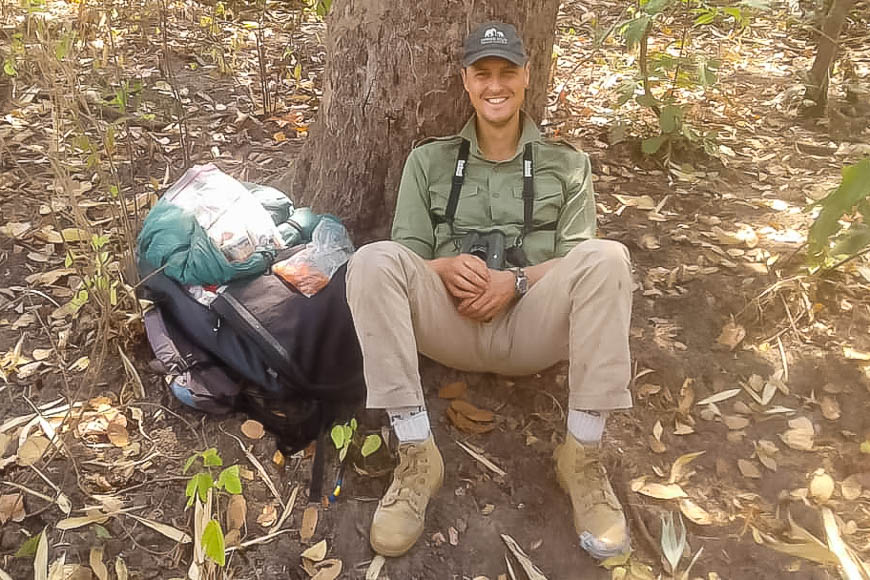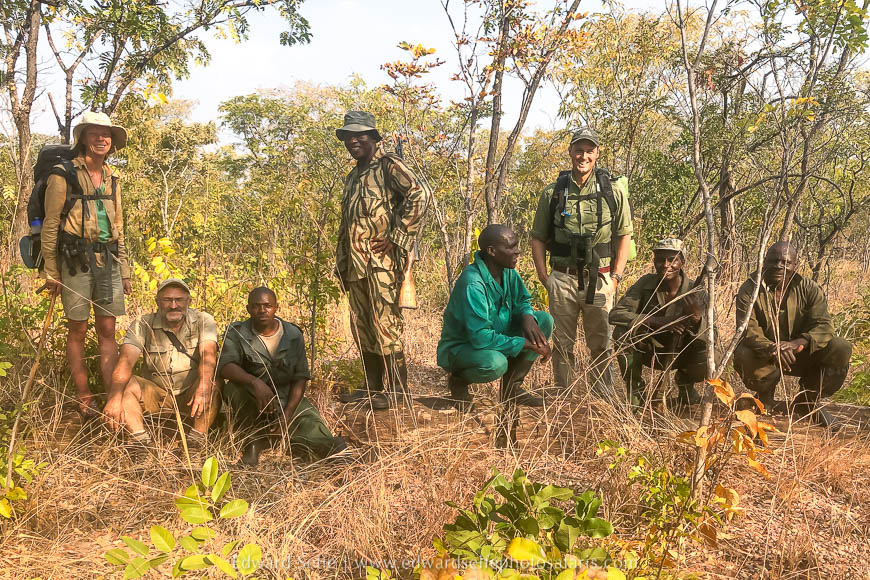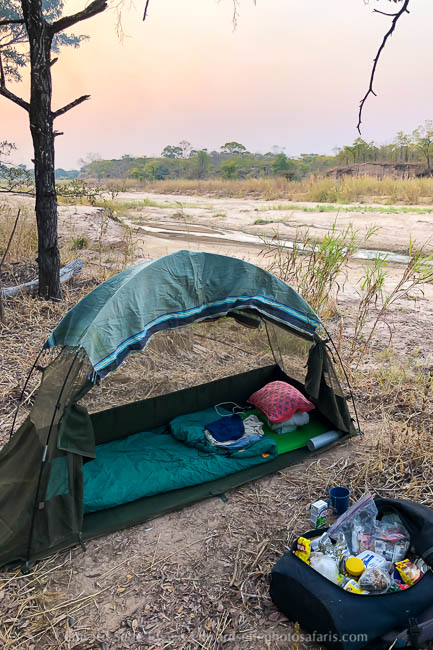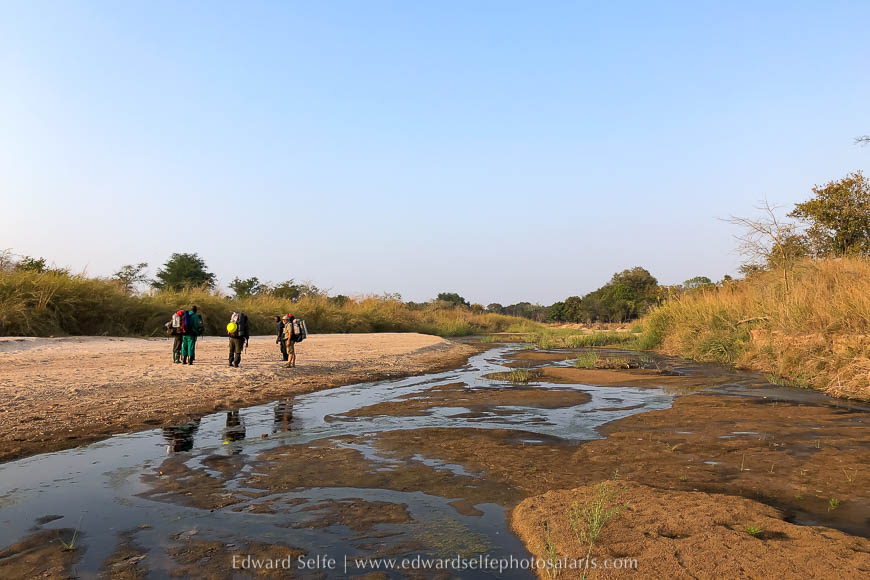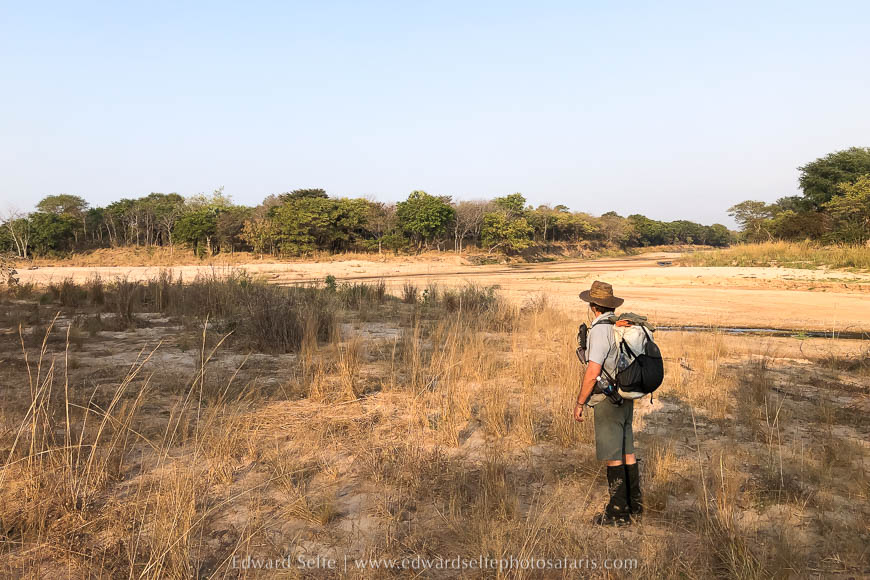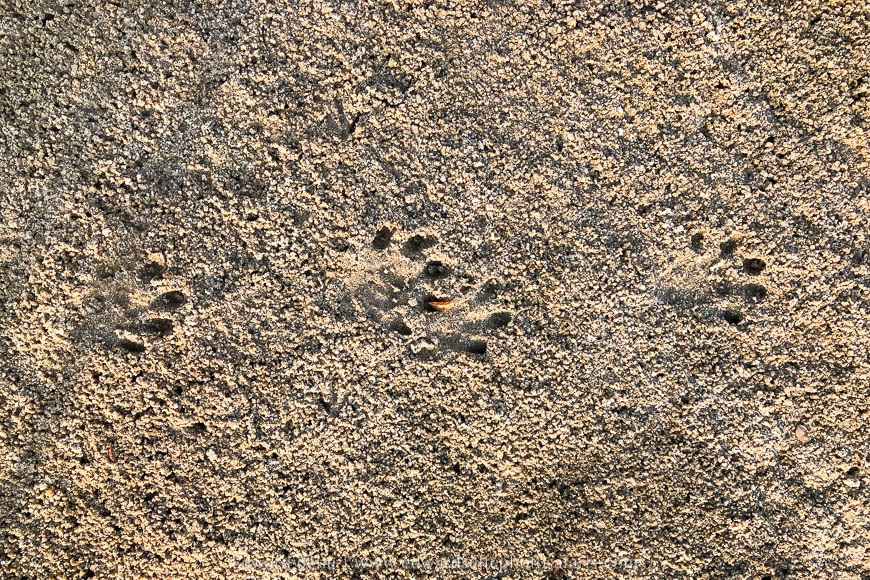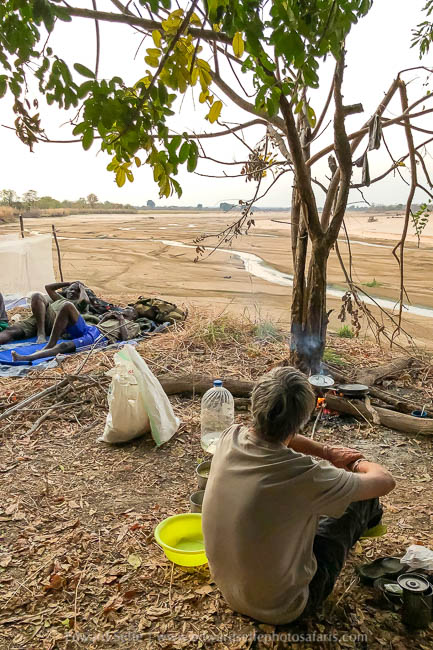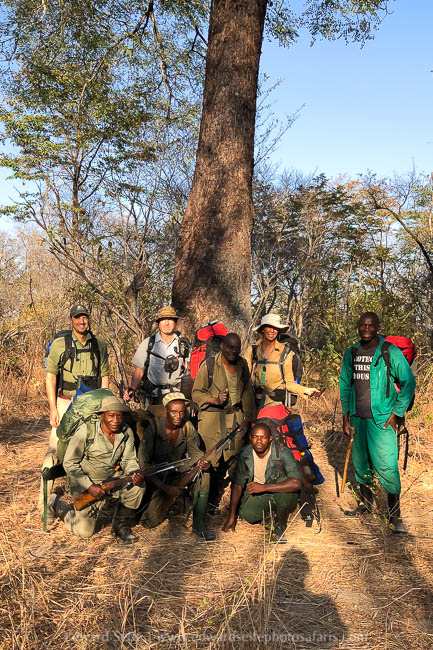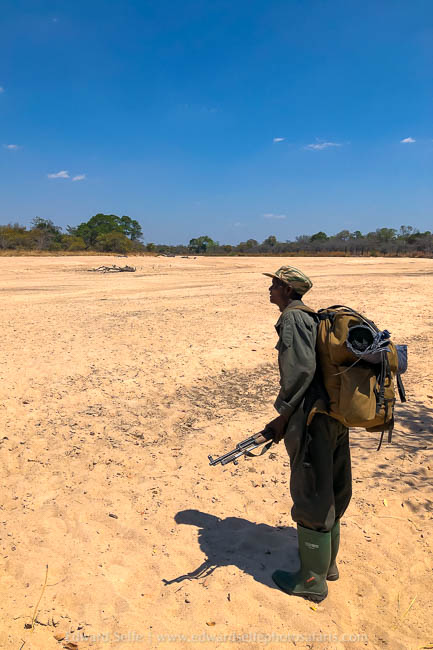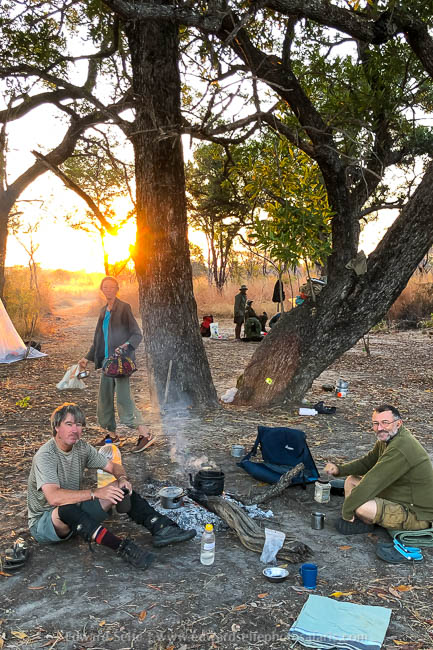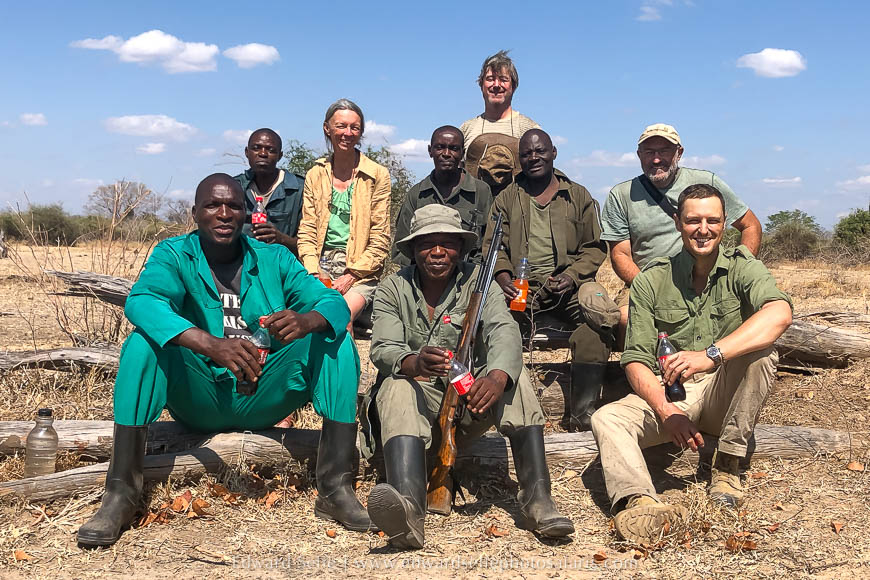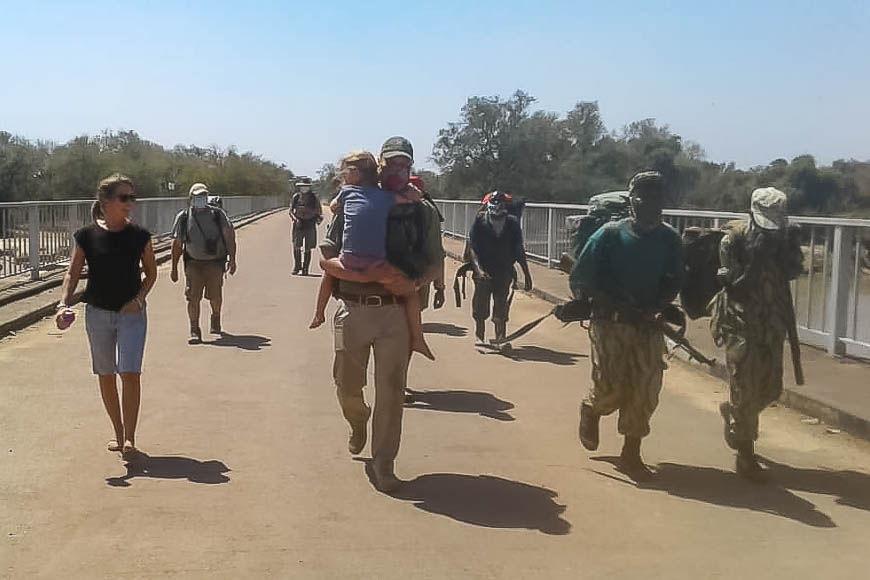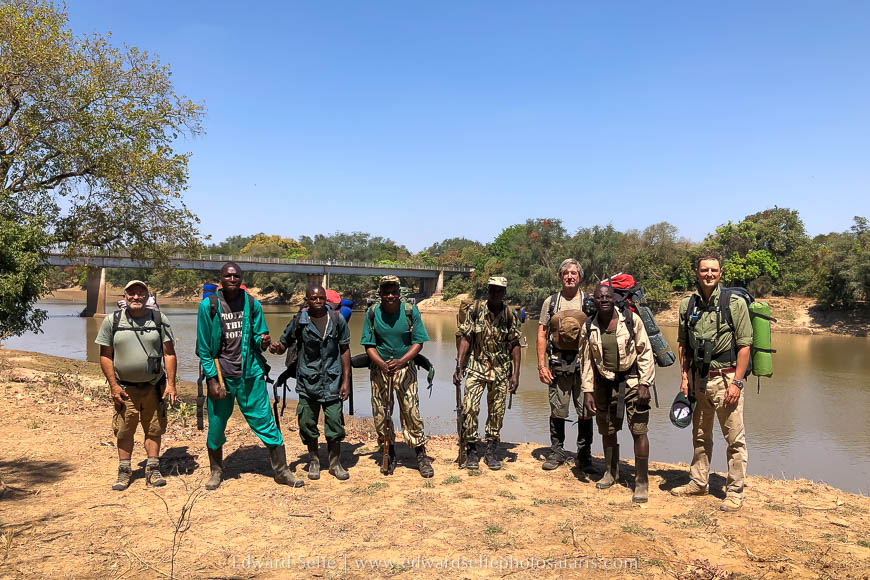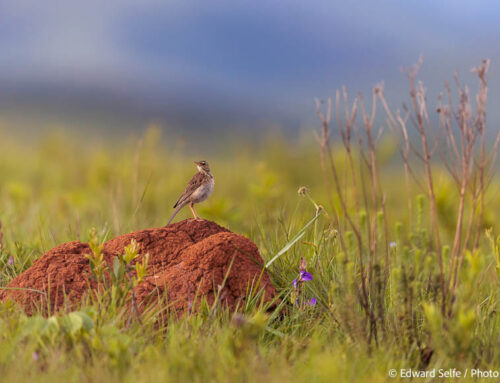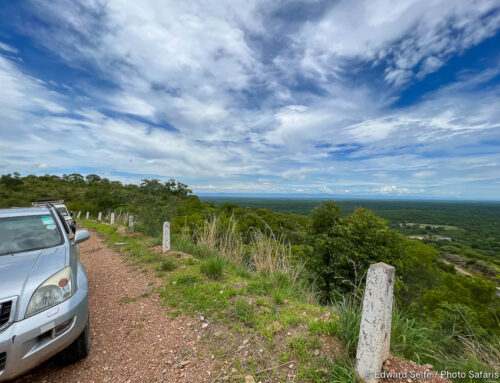In August last year, I took part in an adventure where a group of 9 walkers set off from Mutinondo — on the western side of the Luangwa Escarpment — and walked to Mfuwe in the heart of the Luangwa Valley. We weren’t totally sure how long the journey would take, but we hoped 7 days, expected 8 days and planned for 10! This was a particularly attractive prospect for me as I know the base of the Luangwa Valley very well, and I have driven along and through some of the foothills at the edge, but I had never done a cross-sectional walk such as this. It would give me a chance to see how the vegetation, landscape and wildlife change as you travel from 1600m above sea level at Mutinondo down to 500m in Mfuwe.
Certainly at trip such as this requires quite careful planning. So long as nothing goes wrong, it should be a straightforward 120kms across rough country with some steep descents. The concerns revolved around water sources and an emergency plan in case someone got hurt. In late August, when the walk would take place, there would still be abundant water on the escarpment but many of the water points in the Valley would be dry. We needed to be sure that we could find substantial water sources at least at the start and end of every day, and ideally in the middle too. That meant that we had to be ready to do some shorter days, and equally some very long days, to navigate between these known water points. We were also concerned about injury. There were several sections of the walk where we would be more than 50kms from the nearest road. And by road, I mean even the most basic bush track. So an emergency (like a broken leg that required someone to be carried) had to be carefully thought through. The original group was 4 walkers and 2 National Park scouts, but we quickly realised that if someone needed to be carried, we would need more man-power. So we employed 3 of the staff from Mutinondo (all ex-poachers with good knowledge of the areas we would be walking through) to accompany the walk. They added fun, security and great stories to the adventure.
And so the group was formed; DNPW Scouts Wellis Chilekwa and Sebio Chanda would lead the walk, with Jason Alfonsi and me as guides. Lari Merrett from Mutinondo would join and bring her incredible knowledge of miombo vegetation and Jeff de Graffenried would complete the walking team. The porters, all great characters, were Victor, Mubanga and Kelvin, ex-poachers from the Mpumba chiefdom and now employees at Mutinondo Wilderness.
What follows, as usual, is a record of the adventure in photo form, with captions to add detail. At the end of this blog is a video diary. I think it works better to watch that after the still images below. I decided (given that my pack was already 24kgs on departure from Mutinondo, not to take my camera too, but just to travel with my iPhone. I was impressed with how it performed, giving us GPS mapping, track recording and camera all in one.

We arrived 2 days before the walk’s departure at Mutinondo to make sure we had time to co-ordinate final packing plans and streamline our kit. We wanted to be sure that we didn’t double-pack items that could be shared. After an afternoon of logistics, we had a lovely supper and hit the hay. The sunrise the following morning over the granite inselbergs was definitely worth waking up for!
The day before we left for the walk, we decided to explore the Mutinondo walking trails and take on the largest inselberg in the area, a peak called Mayense…
…a climb of around 350m vertically…..
…with amazing views.
After the descent, we followed a stream until we found a waterfall….
…where we could cool our hot feet!
On the morning of departure, there were some last-minute changes so we left later than planned. But it didn’t matter and it was better that we all had our kit sorted. Here, from L-R, Wellis, Mubanga, Victor, me, Lari, Sebio, Kelvin, Jason and Jeff.
The first day was mostly spent in the woodland along the escarpment where dense forest is the order of the day. But there are occasional openings which give a sense of the scale and importance of these forest areas.
Camp 1, a cosy spot on the edge of a stream, which got very cold overnight!
Back from a bath in the stream!

Taking a break on day 2 after crossing a large stream. The guys were very speedy at boiling water, allowing us all to make coffee and tea regularly!

A teabreak overlooking the Mwatishi Stream.

Jeff looking out over the edge of the escarpment to the valley floor below.
Standing awkwardly while nursing sore knees on the steep descent.
We followed this Mwatishi River for much of the early part of the adventure, crossing it several times and camping twice on its banks.
On the second afternoon, we trekked up its course to find a waterfall that we could hear in the distance. Watch the video at the end for much more on this great adventure.


Swimming in the rock pools at the base of the largest cascade.
Early morning tea on Day 3.
Looking back up the escarpment that we had descended the day before….
…and resting in a bamboo forest on the edge of the National Park.
The Mupumadzi River, the boundary of the park and a massive milestone in the trip.
Taking a break! On days 4 & 5, we had to cover large distances through tough, slightly boring, terrain. We didn’t stop to sit down much, preferring to keep going and reach the rivers at our destinations.
On day 4, I caught my boot on a rough rock and damaged the sole. I spent the rest of the trip patching it with tape that I had brought until that ran out. Then I had to scrounge tape from the rest of the team!

Campsite 5 on the Nyalugwe River in the upper course of the Luwi catchment.

Jeff and I stopped to scour the sand and surrounding areas for otters whose tracks we could see in the sand…

Late afternoon on the Luwi River, watching elephants and hartebeest in the distance, coming to drink at the waterholes.
Team photo under a Scotsman’s rattle tree.
Sebio Chanda, long-time scout and wiry, tough scout pauses to let us all catch up, before crossing the Mushilashi River.
Wonderful evening at Nkhonzi Camp’s site. The camp was not open (as many weren’t during Covid times, so there were no tents or accommodation, but we were grateful for their clean, fresh water supply!
The whole team just before arriving back in to Mfuwe.
Crossing the Luangwa Bridge, with my family to greet us!
The whole team with our destination in the background. Mission accomplished!Thank you for reading this report. I hope you enjoyed it. For the full story, watch this 20 minute video which includes more information on many parts of the trip. I have avoided duplicating info in the video, so the written report is less comprehensive than normal. With thanks as always for following along.
